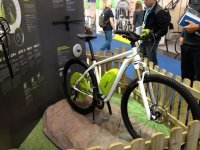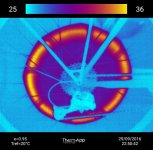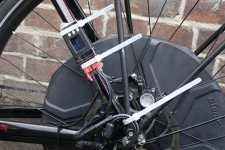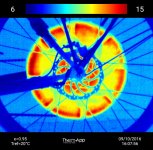Cephalotus
10 kW
- Joined
- Jun 18, 2012
- Messages
- 755
This isn't a joke or a fake.
BionX introduced a huge (and slim) direct rear drive hub motor, the new d-series :
weight: 3,9kg
continous power: 250% more than previous BionX motors...
officially sold as a 250W motor in Europe.
http://products.wheeler.ch/media/catalog/product/cache/10/image/2300x/602f0fa2c1f0d1ba5e241f914e856ff9/i/m/image_1820.jpg
http://products.wheeler.ch/media/catalog/product/cache/10/image/2300x/602f0fa2c1f0d1ba5e241f914e856ff9/i/m/image_2164.jpg
https://fbcdn-sphotos-c-a.akamaihd.net/hphotos-ak-prn2/1277639_561827043853210_848638553_o.jpg
BionX introduced a huge (and slim) direct rear drive hub motor, the new d-series :
weight: 3,9kg
continous power: 250% more than previous BionX motors...
officially sold as a 250W motor in Europe.
http://products.wheeler.ch/media/catalog/product/cache/10/image/2300x/602f0fa2c1f0d1ba5e241f914e856ff9/i/m/image_1820.jpg
http://products.wheeler.ch/media/catalog/product/cache/10/image/2300x/602f0fa2c1f0d1ba5e241f914e856ff9/i/m/image_2164.jpg
https://fbcdn-sphotos-c-a.akamaihd.net/hphotos-ak-prn2/1277639_561827043853210_848638553_o.jpg







